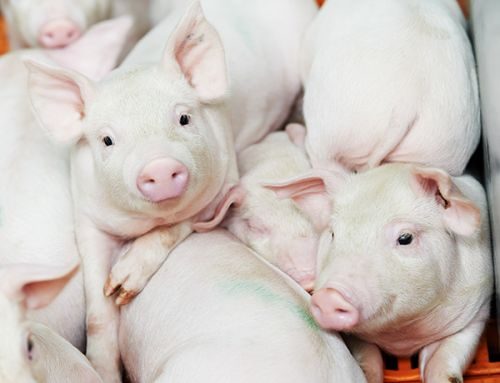VFD in the Swine Industry: Why It’s Important to Track Antibiotic Usage
Posted: July 12, 2017 | Written By: Edan Lambert, Form-A-Feed 2017 Swine Intern

Antibiotic usage is a key issue that the pork industry will always face, and the pressures of it will only continue to increase in the future. With the Veterinary Feed Directive put into effect at the start of January 2017, many livestock producers are still adjusting, even swine producers. Any swine producer that doesn’t have a strong relationship with their local veterinarian, will struggle to acquire the feed-grade antibiotics they need to ensure their pigs are healthy and continuing to grow.
The Veterinary Feed Directive made the use of many feed-grade antibiotics for growth promotion and increased feed efficiency illegal. Antibiotics that contain ingredients closely linked to human medicine, like penicillin and tetracycline, now require a VFD prior to the use of it. Drugs like cephalosporins and fluoroquinolones are limited as well and require a VFD. They are still available but only for uses of prevention and treatment of illness. As stated previously, only a veterinarian with a strong relationship to the operation or veterinarian-client-patient relationship (VCPR) will be able to write the farm specific VFD.
Although the Veterinary Feed Directive is frustrating for a lot of livestock producers and veterinarians, it brings a lot of positives to the agricultural industry. The VFD requires producers to maintain a close relationship with their veterinarians. This will decrease careless use of feed grade antibiotics and the risk of resistance against medication. The herd veterinarian can also supply the producer with practical advice to aid in preventing the illness from starting in the first place.
The Veterinary Feed Directive stems from the social pressures of how antibiotics are being used in the consumers’ food. Antibiotic resistance is a very controversial topic in both the animal and human pharmaceutical industries. Fortunately for the pork industry, producers have been carefully using feed-grade antibiotics for several years. The VFD just gives the pork industry the opportunity to communicate that to the public and meet the needs of the consumer with veterinary oversight. If done right, the VFD will simply reassure the public that the pork industry has already been working together on this hot button issue for years.
To give the consumer what they are desiring, the pork industry needs to tell their story. We need to take every opportunity to share with the public about antibiotic usage and why it’s safe and humane to raise pigs this way. If we don’t start vocalizing our passion for agriculture and way of life to the consumer, we are not going to be able to use antibiotics ever. Other than reduced antibiotic usage, the animal agriculture industry has no viable option if antibiotics become completely banned. The industry needs to continue to invest in viable options other than antibiotics so that we have other alternatives.
From the beginning, Form-A-Feed has been a company striving for innovative solutions to livestock production challenges. Our feed additives and nutritional products aim to naturally improve pig health and performance with the goal of producing wholesome, safe, and quality pork for the consumer.
The Veterinary Feed Directive gives swine producers an opportunity to connect with the public. It gives the industry a chance to show the consumer how swine producers care for their animals and have been caring for them for many years. With our stories, we can increase pork consumption, and continue to produce wholesome, quality pork for the consumer. If we look at it as a negative, we’ll receive negative impacts. If we look on the bright side, we get to connect with the world outside of agriculture and find more opportunities.